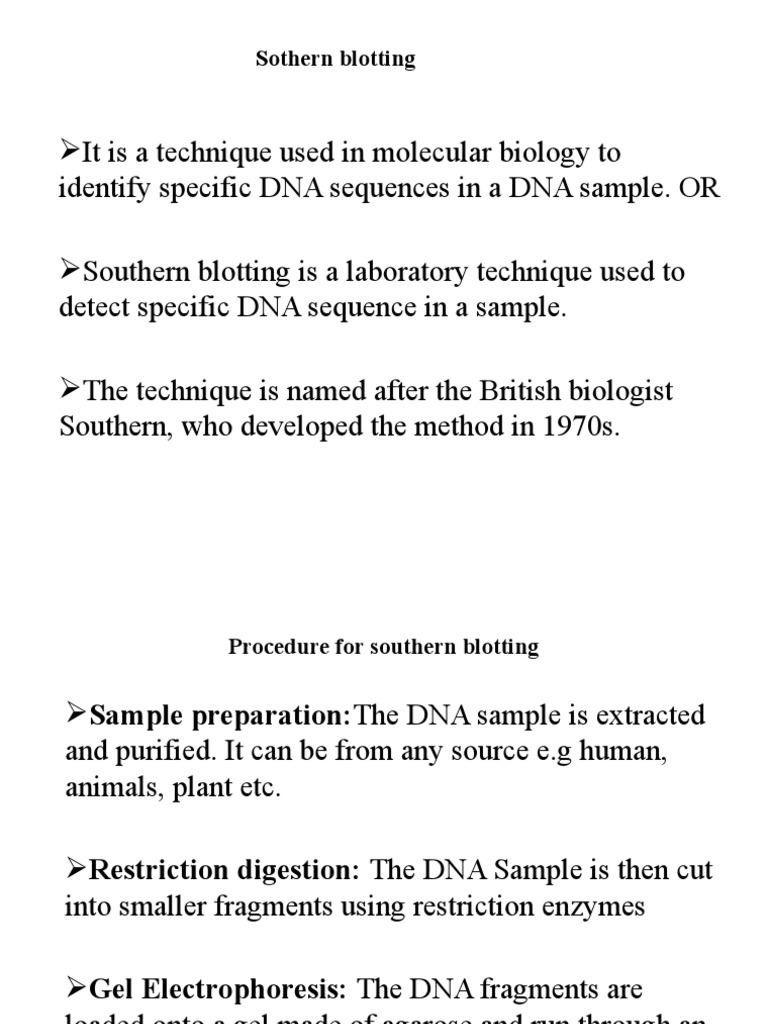The term “blotting,” as it relates to the Southern blot and its subsequent iterations like the Northern and Western blots, might seem oddly prosaic for such a fundamental technique in molecular biology. It conjures images of ink spills and absorbent paper, a far cry from the sophisticated world of DNA hybridization and protein detection. However, the name is not arbitrary. It is rooted in the technique’s core principle: the transfer of biological molecules from a separation matrix to a solid support. This transfer process, akin to blotting excess ink, allows for further analysis and manipulation.
To understand the genesis of the term, it is essential to delve into the history of the Southern blot itself. Developed by Edwin Southern in the 1970s, the Southern blot was a revolutionary method for detecting specific DNA sequences within a complex mixture. Southern sought a way to analyze DNA fragments separated by electrophoresis on an agarose gel. Electrophoresis, a process exploiting the differential migration of charged molecules in an electric field, neatly separates DNA fragments based on size. Yet, these fragments remained embedded within the fragile gel matrix, making direct analysis challenging. The gel was far from ideal for probing, hybridization, or other subsequent analyses.
Southern’s ingenuity lay in his method for transferring these separated DNA fragments from the gel to a more robust and accessible medium: a nitrocellulose membrane. The process involved placing the gel in contact with the membrane, with a buffer-soaked filter paper stack acting as a “wick” to draw the buffer through the gel and into the membrane. Capillary action, the same force that allows a paper towel to soak up a spill, drives the transfer. As the buffer moved, it carried the DNA fragments along, effectively “blotting” them onto the membrane’s surface. This process is fundamentally a transference of molecules from one medium to another.
The nitrocellulose membrane, with its high affinity for nucleic acids, tightly bound the transferred DNA. This immobilization was crucial. The membrane provided a stable platform for hybridization, a process where a labeled probe, complementary to the target DNA sequence, could be applied. The probe would bind to the specific DNA fragment of interest, allowing for its detection and quantification. In essence, the Southern blot enabled researchers to isolate and identify specific DNA sequences from a complex genomic milieu. The original “blotting” procedure was the critical step enabling this isolation and identification.
The beauty of the blotting technique lies in its adaptability. Following Southern’s seminal work, researchers quickly recognized the potential for applying the same principle to other biological molecules. The Northern blot, developed to analyze RNA, and the Western blot, used to detect proteins, emerged as natural extensions of the Southern blot. In each case, the term “blotting” retained its metaphorical significance, describing the transfer of molecules from a separation matrix to a solid support. The name encapsulated the essence of the technique, regardless of the specific molecule being analyzed.
The term “Northern blot” is, in fact, a playful tribute to Southern. It doesn’t literally relate to any geographic north. Similarly, “Western blot” is yet another directional nod, completing a whimsical, yet scientifically significant, trio. These names are more than just labels; they represent a lineage of scientific innovation, each building upon the foundation laid by the original Southern blot.
While alternative terminologies might have been possible, the simplicity and evocative nature of “blotting” contributed to its widespread adoption. It is a term that is easily understood and remembered, even by those unfamiliar with the intricacies of molecular biology. The metaphor of transferring an image or pattern from one surface to another resonates intuitively. It has become entrenched in scientific lexicon.
Beyond its simplicity, “blotting” hints at the inherent imperfection of the transfer process. Just as blotting ink might result in a slightly smudged image, the transfer of molecules in a blot is not always perfectly uniform or complete. There can be some inefficiencies during the transfer. The term subtly acknowledges this inherent variability, reminding researchers to carefully optimize their blotting conditions and interpret their results with appropriate caution.
In conclusion, the term “blotting,” as applied to the Southern, Northern, and Western blots, is more than just a descriptive label. It is a metaphor that captures the essence of the technique: the transfer of biological molecules from a separation matrix to a solid support. Its simplicity, evocative imagery, and historical significance have cemented its place as a fundamental term in molecular biology. It serves as a reminder of the ingenuity of Edwin Southern and the enduring legacy of his groundbreaking invention. The name also subtly acknowledges the inherent nuances of the technique itself.










Leave a Comment